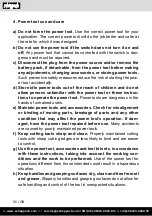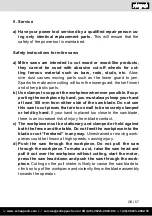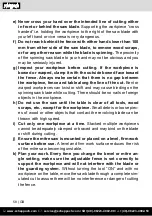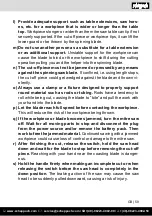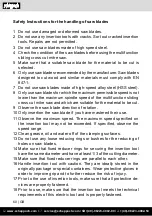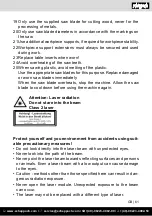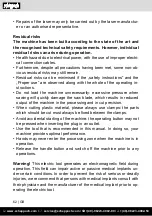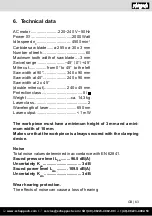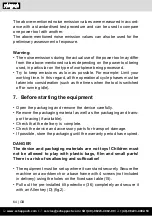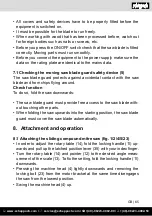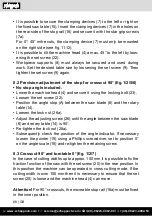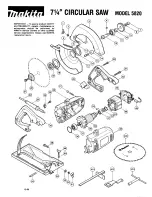
www.scheppach.com /
service@scheppach.com /
+(49)-08223-4002-99 /
+(49)-08223-4002-58
70 | GB
• Cut as described in section 8.3.
8.7 Mitre cut 0°
−
45° and turntable 0°
−
45°
(fig. 2/4/12)
The sliding compound mitre saw can be used to make mitre cuts to the
left of 0°
−
45° in relation to the work face and, at the same time, 0°
−
45° to
the left or 0°
−
45° to the right in relation to the stop rail (double mitre cut).
Attention!
For mitre cuts (inclined saw head), the
left side
of the move-
able stop rails (16a) must be fixed in the outer position.
• Open the set screw (16b) for the moveable stop rail (16a) and push the
moveable stop rail (16a) outwards.
•
The moveable stop rail (16a) must be fixed far enough in front of the
innermost position that the distance between the stop rail (16a) and
the saw blade (6) amounts to a minimum of 8 mm.
• Before making a cut, check that the stop rail (16a) and the saw blade
(6) cannot collide.
• Re-tighten the set screw (16b).
• Move the machine head (4) to its upper position.
• Release the rotary table (14) by loosening the handle (11).
• Set the rotary table (14) to the desired angle (refer also to point 8.4 in
this regard).
• Fold the locking handle (11) downwards to secure the rotary table (14).
• Undo the set screw (22).
• Use the handle (1) to tilt the machine head (4) to the left until it coin-
cides with the required angle value (in this connection see also section
8.6).
• Re-tighten the set screw (22).
• Cut as described under section 8.3.
8.8 Limiting the cutting depth (fig. 3/13)
•
The cutting depth can be infinitely adjusted using the screw (24). To do
this loosen the knurled nut (24a) on the screw (24). Turn the screw (24)
in or out to set the required cutting depth. Then re-tighten the knurled
nut (24a) on the screw (24).
• Check the setting by completing a test cut.

